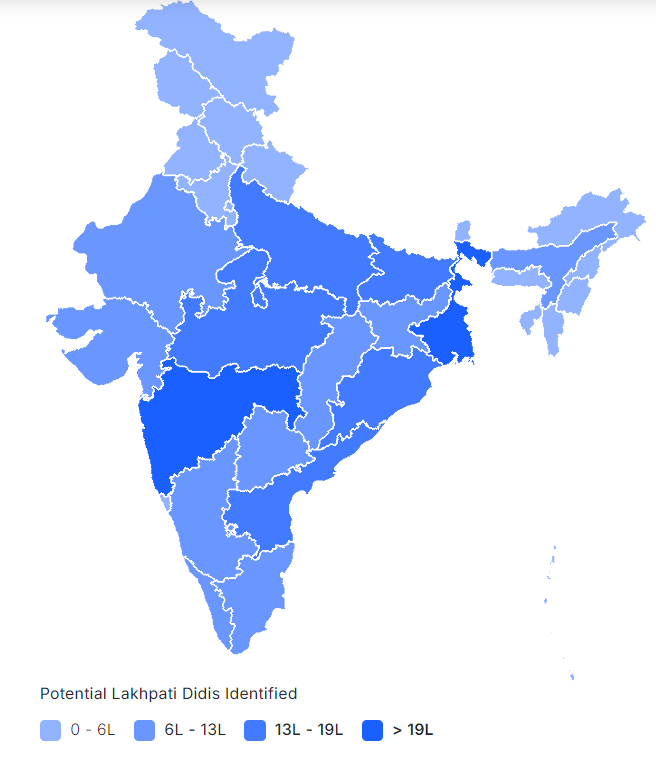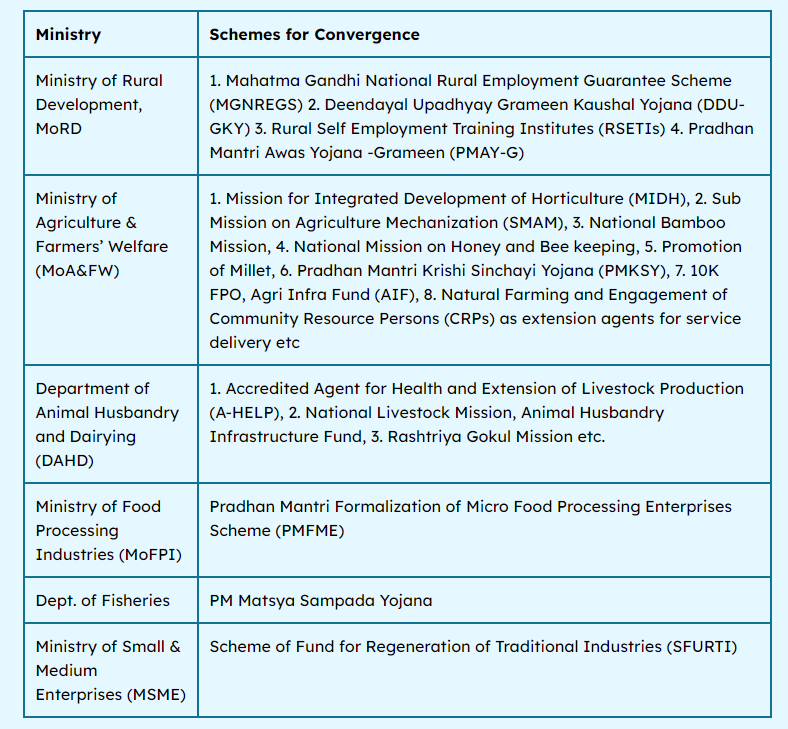Important Facts For Prelims
Lakhpati Didi
- 31 Aug 2024
- 5 min read
Source: PIB
Why in News?
Recently, the Prime Minister (PM) of India participated in the Lakhpati Didi Sammelan in Maharashtra, a significant event focused on empowering rural women through Self-Help Groups (SHGs).
What are the Key Highlights of the Lakhpati Didi Sammelan?
- Certificates and Felicitations: PM handed out certificates and felicitated 11 lakh new Lakhpati Didis who recently became Lakhpati during the third term of the present government.
- Financial Disbursements: A revolving fund of Rs 2,500 crore was released, benefiting about 48 lakh members of 4.3 lakh SHGs.
- Additionally, Rs 5,000 crore in bank loans were disbursed to benefit 25.8 lakh members of 2.35 lakh SHGs.
- Cultural and Economic Significance: The PM emphasised women's vital role in the rural economy and their contribution to India’s rise as the third-largest global economy within three years, highlighting a shift from historical neglect to recent initiatives aimed at alleviating their burdens.
What is the Lakhpati Didi Initiative?
- About: A "Lakhpati Didi" is a member of a SHG who has successfully achieved an annual household income of Rupees One Lakh or more.
- This income is sustained across at least four agricultural seasons or business cycles, ensuring that the average monthly income exceeds Rupees Ten Thousand (Rs. 10,000).
- It was initiated by the Deendayal Antyodaya Yojana- National Rural Livelihoods Mission (DAY-NRLM), wherein each SHG household is encouraged to take up multiple livelihood activities coupled with value chain interventions, resulting in a sustainable income of Rs. 1,00,000 or more per year.
- Purpose: The initiative aims to empower women not only by improving their income but by transforming their lives through sustainable livelihood practices.
- These women serve as role models in their communities, demonstrating the power of effective resource management and entrepreneurship.
- Lakhpati Didi Strategy:
- Diversified Livelihood Options: The initiative emphasises deepening, strengthening, and expanding livelihood options for SHG members.
- Trained Community Resource Persons facilitate livelihood planning for SHG members using digital tools for resource linkages.
- Implementation Support: SHG members receive timely support in the form of assets (inputs, equipment, infrastructure), skills (knowledge and practical skills), access to finance (bank linkage, departmental schemes), and market access (branding, packaging, e-commerce).
- Capacity Building: Regular and structured training programs are provided to Mission Staff, community institutions, and SHG members on various aspects of livelihood activities.
- Convergence and Partnerships: The initiative leverages convergence with various government schemes and partnerships with private sector players to mobilise technical, financial, and capacity-building resources.
- Diversified Livelihood Options: The initiative emphasises deepening, strengthening, and expanding livelihood options for SHG members.
- Achievements: Since the inception of the Lakhpati Didi Yojana in 2023, one crore women have already been made Lakhpati Didis and the government announced the enhancement of the target for Lakhpati Didi from 2 crore to 3 crore, recognising the success of 83 lakh SHGs with 9 crore women transforming the rural socio-economic landscape.
- More than Rs 6000 Crore were disbursed for lakhs of Women SHGs spanning across India.

Other Initiatives Related to Women Empowerment
UPSC Civil Services Examination Previous Year Questions (PYQs)
Prelims
Q. How does the National Rural Livelihood Mission seek to improve livelihood options of rural poor? (2012)
- By setting up a large number of new manufacturing industries and agribusiness centres in rural areas
- By strengthening ‘self-help groups’ and providing skill development
- By supplying seeds, fertilizers, diesel pump-sets and micro-irrigation equipment free of cost to farmers
Select the correct answer using the codes given below:
(a) 1 and 2 only
(b) 2 only
(c) 1 and 3 only
(d) 1, 2 and 3
Ans: (b)







